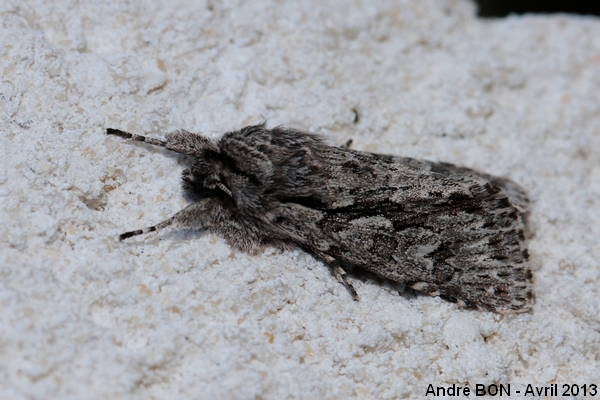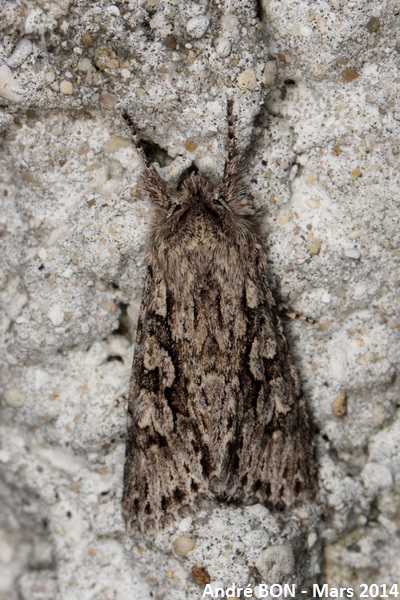

| Early Grey (Xylocampa areola (Esper, 1789)) |


|
|
Scientific name: Xylocampa areola (Esper, 1789) Common name: Early Grey French name: Noctuelle aréolée Order: Lepidoptera Suborder: Heterocera Family: Noctuidae Subfamily: Oncocnemidinae Wingspan: 32-40 mm. Biotope: Open woodlands, hedgerows, bushes, gardens. Geographic area: Europe north to southern Scandinavia, western part of Central Europe, Syria, Asia Minor, North Africa. Flight time: November to May in the southern part of the range, March to May in the northern part. Number of generations : 1 Caterpillar: Brownish or greyish, elongated, with a thin dark longitudinal line on the flanks, one paler dorsal stripe and some black dorsal spots at about two thirds of the length. Host plant: Honeysuckles (Lonicera), in particular Common Honeysuckle (Lonicera periclymenum). |
The Early Grey has grey fore wings marbled with dark grey. Some specimen show a pinkish tint. There is a short black streak in the basal area. The orbicular and reniform spots are a paler colour. There is an additional oval-shaped spot touching the orbicular spot, on the inner side of the wing, and very often another oval-shaped spot touching the reniform spot. These two additional spots are often touching. This assembly is bordered by a darker area on the inner side of the wing. There is a row of small black spots, triangular or elongated, in the submarginal area. The hind wings are whitish with darker veins. The Early Grey over winters as a pupa under the ground. |
| [To know more about the Early Grey] [Next picture] [Top] |

|
The colour of the Early Grey makes it difficult to detect when landed on tree trunks. This camouflage is much less efficient when landed on one gate post. |
| [To know more about the Early Grey] [Previous picture] [Top] |

|
The orbicular, reniform and touching oval-shaped spots are clearly visible on this picture. |